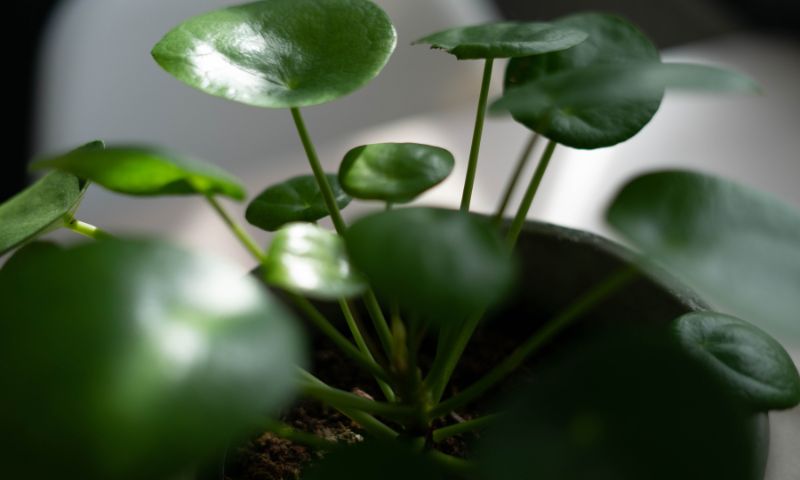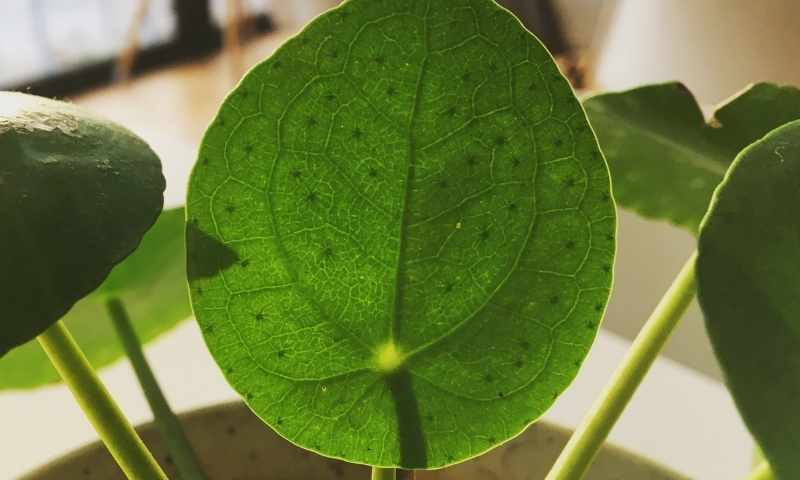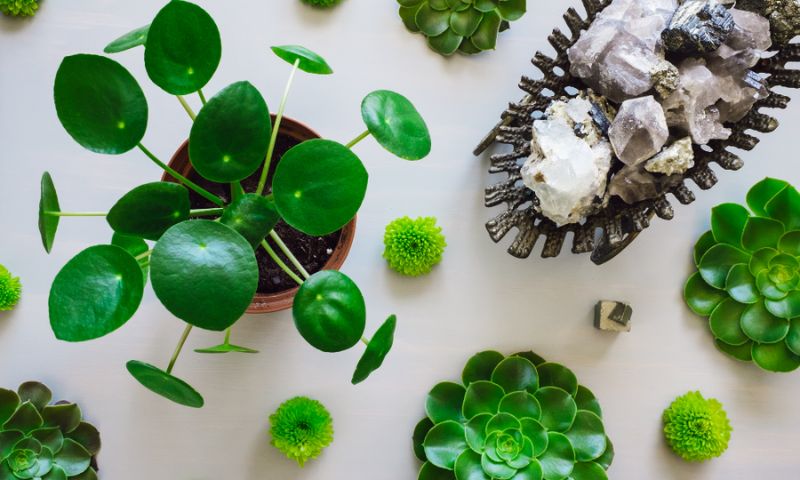Pilea Peperomioides, also known as the Chinese Money Plant, is a great houseplant for beginners to grow. It’s easy to care for and adapts well to many different environments.
Its small size makes it ideal for those who have limited space available for plants or simply don’t want something tall and wide taking up the majority of their living space.
This is one of my favourite plants and I love the sight of new leaves popping up regularly throughout the year. So let’s get stuck into this quick guide on Pilea Peperomioides care.
And no, you don’t always have to call it by its full name, Pilea will do! But please excuse me if I use its full name now and then!
Key Takeaways:
- Ideal for Beginners: Pilea Peperomioides is easy to care for and adapts well to various environments, making it suitable for beginners.
- Light Requirements: Prefers medium, indirect light and can tolerate low light levels. Direct sunlight should be avoided as it can burn the leaves.
- Watering: Water when the topsoil is dry. The plant tolerates neglect but avoid over-watering.
- Feeding: Feed every two weeks in spring and summer, and every month or two in autumn and winter. Use liquid fertilizer for tropical plants.
- Common Problems: Leaf drop can occur due to insufficient light or over-watering. Adjust lighting or watering as needed.
Light for Pilea Peperomioides Care
As with most indoor plants, the key part of Pilea Peperomioides care is the light it receives.
The Pilea is a medium-light-requiring plant and prefers to be kept in indirect light. However, it can tolerate relatively low light levels. The Pilea will grow more slowly with less light, but it will survive in low-light conditions for quite some time without any problems.
The Pilea Peperomioides does not like a lot of direct sunlight because this can burn its leaves and cause them to wilt and fall off (and possibly never grow back). While this may seem obvious—who would want their plant’s leaves falling off?—it’s important for home gardeners who want their plants looking good all year round to keep this fact in mind when deciding where they will place them.
If there isn’t an obvious spot where they can accommodate their new houseplant, perhaps use a hanging basket or use a grow lamp to place it wherever you like!
Read our quick guide for more help with achieving the right light levels for your plant.

Watering for Pilea Peperomioides Care
You should water when the top of the soil is dry to the touch. This may vary depending on your plant’s size and how much light it receives but generally speaking, you’ll want to avoid over-watering rather than under-watering.
Pilea Peperomioides is a very low-maintenance plant that can tolerate a lot of neglect (not that we encourage that!), Check out our post on the best method for watering your indoor plant.
Feeding for Pilea Peperomioides Care
Pilea Peperomioides needs to be fed every two weeks in spring and summer (the growing season) and every month or two in autumn and winter. In fact, you could get away with no feeding over the winter.
It’s best to use a liquid fertilizer specifically for tropical plants. Simply add the recommended amount to water in your watering can.

Soil & Potting for Pilea Peperomioides Care
The soil should be well-draining and made up of a mixture of peat moss, sand and perlite. A potting mix that is too dense will cause the plant to rot.
You’re best using a pot with drainage holes so that excess water can drain away from the roots of your plant. Pop this in a decorative planter or dish to catch the excess water without ruing the surface it sits on.
When considering re-potting, use common sense. If the plant looks too big for its pot, then it probably is! But you can also check whether you can see roots coming out of the bottom of the pot. We have a good guide for repotting your indoor plants.

Temperature & Humidity for Pilea Peperomioides Care
Pilea Peperomioides prefers a temperature between 50-85 degrees F (10-30 degrees C) and a humidity of around 50-75%. Be sure to let the soil dry out between waterings, as standing water can cause root problems. Always make sure that your Pilea Peperomioides is not exposed to direct sunlight for extended periods of time (i.e., 2 hours or more).
If your plant is in a dry environment, you can mist it with a misting spray bottle or keep it on a tray of pebbles with water in it. Another method is to keep it in a glass cabinet with other plants and they will create their own micro-climate!
Common Problems
Pilea Peperomioides is a beautiful and forgiving houseplant. However, there are some things you should know about caring for this plant if it is going to remain healthy and continue to thrive in your home.
Common problems with this plant include leaf drop, which can be caused by a variety of factors including insufficient light or too much water. If you notice that your plant’s leaves are turning yellow and falling off, try adjusting the lighting conditions in its location (add more light) or cutting back on watering.
However, if you see that your Pilea is dropping leaves during regular watering cycles but otherwise appears healthy and happy, then nothing needs to be done! It’s simply a natural cycle almost all plants go through.

Propagating Pilea Peperomioides
One way to propagate the Pilea Peperomioides is by cuttings. The advantage of this method is that it gives you a lot more plants than any other method, and they are easy to root.
You will notice ‘baby’ Pilea appearing at the edges of your pot after a while (or they may already be there when you get your plant). These are offshoots from the main plant and can be cut to produce a whole new plant.
Wait until the baby plant is a couple of inches tall. Use a sharp, clean knife to cut the root between the main plant and the new one.
Let the cut end harden for a few minutes, then place this Pilea offshoot into a small glass (I use a shot glass!) and leave it somewhere bright for a couple of weeks. During this time it will grow new, small, white roots.
After two weeks, transplant this to a new, small pot with indoor plant potting mixture.
You have a new Pilea plant!
Pilea Peperomioides is a beautiful houseplant suitable for any plant lover, from beginner to advanced. Hopefully, this Pilea Peperomioides care guide sets you on the right track for your Pilea to thrive!
With its small size, easy-care and beautiful appearance, the Pilea, or Chinese Money Plant, is a great addition to any home. It requires little attention and will thrive with just the right amount of light and watering.
It’s so rewarding seeing the little baby Pilea appearing and knowing that you will have several new plants in no time at all!
I hope you enjoy raising a Pilea family as much as I have over the years!
